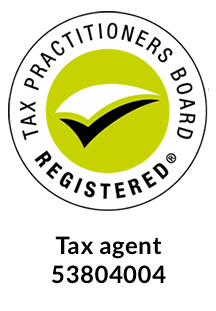Commercial
Commercial Depreciation
Commercial Depreciation investing is interesting as there are substantial tax benefits for both the commercial property owners and tenants.
By preparing yourself with everything you need to know about commercial property depreciation, as a property owner or a tenant, you can save thousands of dollars each year.
What has measured a Commercial Property?
Normally, a commercial investment property is a property built to operate a business.
The property investors who own commercial property will generate their income from renting out space to commercial tenants.
The tenants produce their income from operating their business out of the property. Examples include:
- factories/warehouses
- offices
- restaurants
- medical centres
- shopping centres or shop fronts
- farm
Warehouses
Hotels
Offices
Primary Production
What Is Commercial Property Depreciation?
As a building gets older, its structure and the assets within the building are subject to general wear and tear. In other words, each year, the value decreases and thus, depreciates.
The Australian Tax Office (ATO) allows commercial property investors as well as its tenants to claim depreciation as a tax deduction if the property is used to produce income.
There are two types of commercial depreciation deductions:
- Division 43 – Capital Works Deductions
- Division 43 capital works deductions refer to the depreciation of the structure of the building. Generally, commercial property owners are eligible to claim depreciation on a commercial building if it was built after 20 July 1982
- Division 40 – Plant and Equipment
- The term “plant and equipment” (or Division 40) refers to the fixtures and fittings that are found within the building.
- These are generally known as easily removable assets.
- Plant and Equipment assets are depreciated according to their value and effective life as determined by the ATO.
- Taking advantage of these commercial property tax depreciation deductions can result in a substantial cash flow benefit.
Case Study
Warehouses
Case Study :
- Bob bought a warehouse for $900K in Smithfield - (1,500m2 with 4 car spaces).
- It came with a small kitchenette & a bathroom. It produced $1,500 per week or $78,000 per year.
- Total annual expense including interest & management fees) are around $120,000.Bob was asked to get a tax depreciation schedule from APQS.
- APQS can claim $60,000 as a first-year tax deduction for this property.
- Bob was able to save about $22,200 annually and $88,000 in the first five financial years.
*Case studies and figures are based upon tax depreciation schedules completed by APQS and do not represent any particular investment property scenario. The information provided is a general guide and does not represent financial, legal or taxation advice.
Annual Income
$78,000
Total Annual Expenses
$120,000
First-year Tax Deduction
$60,000
Save In Total (first year)
$22,200
Annual Income
$28,600
Total Annual Expenses
$60,000
Improve cash flow ($130 x 48weeks)
$6,240
Commercial suite
Case Study :
- Spencer bought a commercial suite for $850K.
- Spencer rents it out to a tenant for $550.00 per week or $28,600 per year.
- Spencer has to pay around $60,000 for repairs, maintenance, interest, rates and management fees.
- Spencer has engaged with APQS to prepare a schedule for his property.
- APQS can improve Spencer’s cash flow by about $130 per week and $25,000 in the first five financial years.
*Case studies and figures are based upon tax depreciation schedules completed by APQS and do not represent any particular investment property scenario. The information provided is a general guide and does not represent financial, legal or taxation advice.
What’s the Difference between Commercial Property Investors and Commercial Tenants?
Commercial property owners can claim depreciation deductions for the building’s structure as well as any assets they own within their property.
Commercial tenants, on the other hand, can claim tax depreciation deductions for any assets that they purchase and install during the lease period.
For example:
Nick bought a warehouse on the ground floor with an office upstairs for $800K.
The warehouse was built in 2012. Nick leased out the warehouse & office to his tenant for 3 years. The tenant then spent $16,000 to fit out with 3 rooms with partition walls/doors in the office.
As the landlord (Nick) of the warehouse/office – Nick can claim the depreciation on the building (Division 43) and existing plant & equipment (Division 40) within the property.
As for the tenant of the warehouse/office – Tenants can only claim the deprecation on fit-out cost of $16,000 plus any works that may be done later during the lease period and along with producing an income from the business.
How It Works
1. Get a Quote
Request for a quote from the APQS team, send us the property details at
info@apqs.com.au
Once the property inspection is done, we'll come back to the office to prepare the report.


